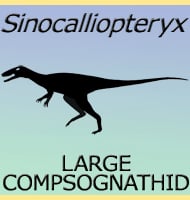In Depth
The type specimen was originally assigned to the genus Microceratops (now a synonym to Microceratus), Graciliceratops seems to have been a small and lightly built ceratopsian dinosaur. Graciliceratops seems to have been more comfortable in a bipedal posture, but already it is clear that Graciliceratops would have been easily able to adopt a quadrupedal posture when browsing upon low growing vegetation. The mouth of Graciliceratops had already formed a shearing beak which would have been capable of shearing off parts of plants.
Further Reading
- The fossil record, systematics and evolution of pachycephalosaurs and ceratopsians from Asia - P. C. Sereno - In The Age of Dinosaurs in Russia and Mongolia. by M. J. Benton, M. A. Shishkin, D. M. Unwin & E. N. Kurochkin (eds) - 2000.










